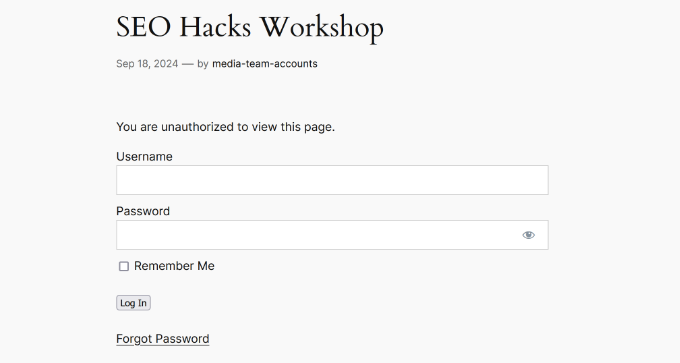Whether you are managing a local business, community organization, or personal blog, using WordPress to show upcoming events has a lot of benefits. It can help increase awareness about your activities and boost participation as a result. Plus, when people have access to all the necessary details about your events conveniently online, it also improves the user experience.
At WPBeginner and our other brands, we regularly display upcoming events on our sites. For example, we have shown upcoming events for webinars, workshops, interviews with industry experts, and more. Showing these upcoming events has helped us increase visibility and encourage user registration.
In this article, we will show you how to display upcoming events in WordPress.
Why Show Upcoming Events on Your WordPress Website?
You can add all kinds of online events to your WordPress site. These can include conferences, workshops, webinars, concerts, interviews, Facebook events, and more. However, if your events are not visible to users, then you might not get the best attendance rates. A well-designed event display can significantly increase the number of people who attend. When visitors can easily discover and learn about your events, they’re more likely to participate. A clear and informative presentation can act as a virtual invitation, prompting visitors to register or make plans to attend.
For example, at WPBeginner, we showcased our upcoming free workshop event on growing email lists with a dedicated blog post.
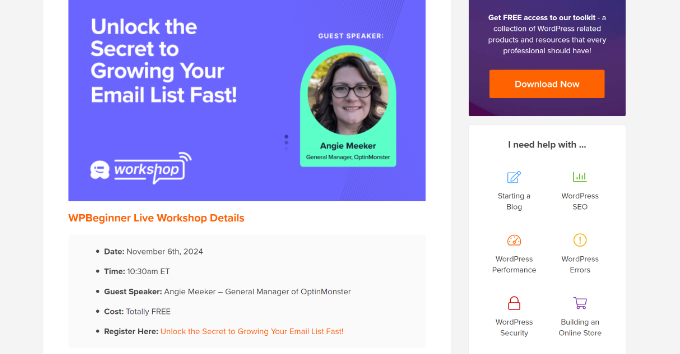
By displaying upcoming events, you also give visitors a reason to return to your site regularly. They can stay informed about future events, which creates engagement and encourages them to check back for updates.
For this reason, it can also be a good idea to display upcoming in-person events on your WordPress site. In this case, you could provide people with essential details like ticketing information and directions to the event.
That said, let’s look at an easy way to use WordPress to show upcoming events. Here’s what we’ll go over in this article:
Creating Events and Calendars in WordPress
The easiest way to create calendars and upcoming events in WordPress is by using Sugar Calendar. In our opinion, it is the best WordPress event plugin. We used and tested it extensively when writing our Sugar Calendar review.
Note: For this tutorial, we will use the Sugar Calendar Pro version because it includes advanced features like recurring events and selling event tickets. There is also a Sugar Calendar Lite version that you can use for free.
First, you’ll need to install and activate the Sugar Calendar plugin. If you need help, then please see our guide on how to install a WordPress plugin.
Upon activation, you can go to the Calendar » Settings page from the WordPress dashboard and enter your license key in the ‘License Key’ field.
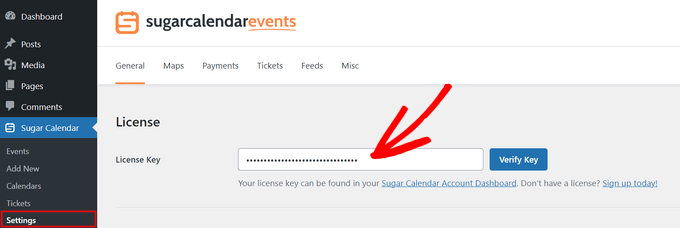
You can find the key in your Sugar Calendar account area. After entering the key, simply click the ‘Verify Key’ button.
Once that’s done, the next step is to create a new calendar. Sugar Calendar will automatically add a calendar to your site, but you may want to create a more custom option.
To start, simply head to Sugar Calendar » Calendars from the WordPress admin dashboard and click the ‘+ Add Calendar’ button.
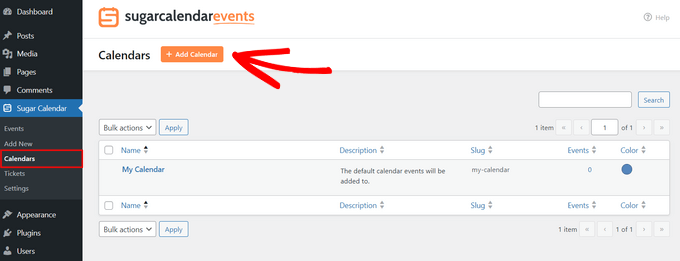
After that, you will need to enter a calendar name at the top and select a slug.
You can also choose a parent calendar, add a description, and select a color to differentiate different calendars.
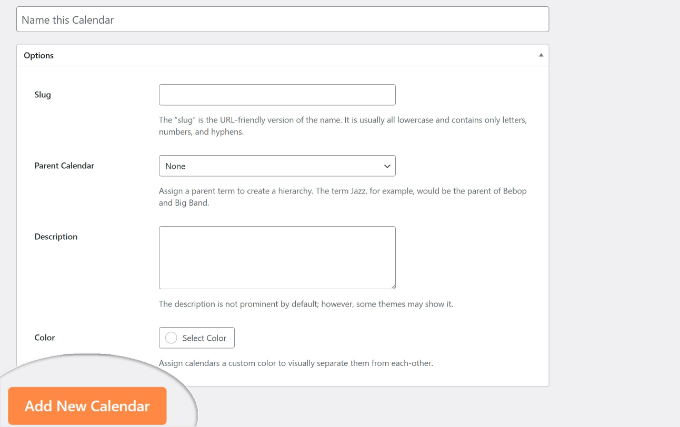
Once you’re done, simply click the ‘Add New Calendar’ button.
You can repeat this step to add as many calendars as you want to your WordPress site. To learn more, please see our guide on how to create a simple event calendar.
Next, you can add events to your site and show them on the calendar. To start, simply go to Sugar Calendar » Events from the WordPress admin panel and then click on the ‘Add New Event’ button.
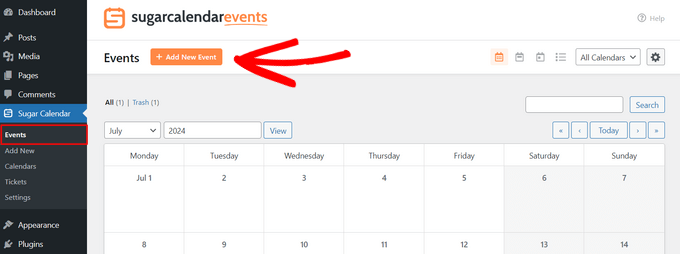
After that, you will need to enter a name for your new event at the top.
From here, you can set the start and end date and time under the ‘Duration’ tab.
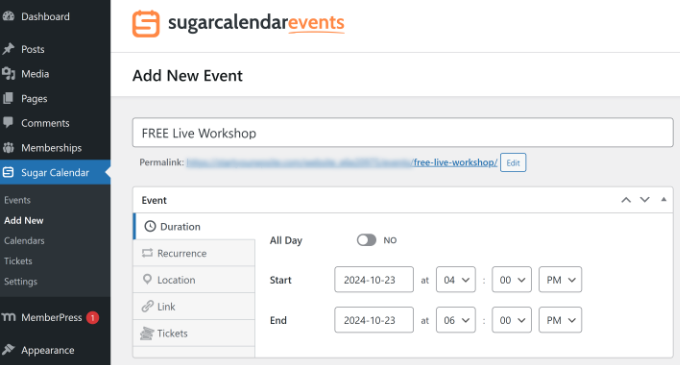
If the event occurs more than once, then you can switch to the ‘Recurrence’ tab and select when the event will repeat. For more details, see our tutorial on how to show recurring events in WordPress.
You can also add a location for physical events, enter a link to display event details on another page, or redirect users to a different page. Sugar Calendar also offers an option to sell event tickets online and make money (we talk about this more in our bonus section).
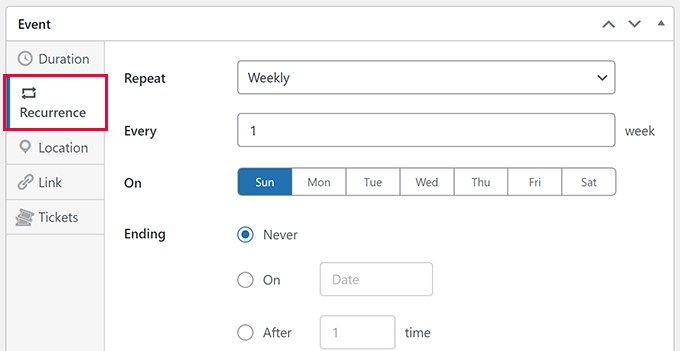
Once you’re done, the next thing to do is select the calendar where your upcoming events will be shown.
After that, go ahead and click the ‘Publish’ button.
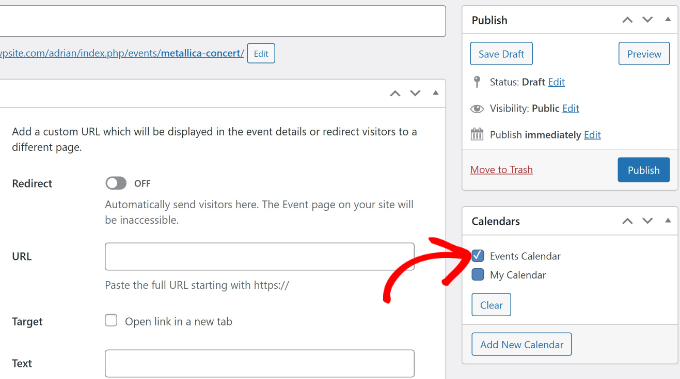
Displaying Upcoming Events in WordPress
Now that you’ve created a calendar and added events, it’s time to display them on your WordPress website.
To start, you can create a new page or edit an existing one. Once you’re in the content editor, go ahead and click the ‘+’ icon and search for Sugar Calendar blocks. You’ll see 2 blocks: ‘Events Calendar’ and ‘Events List.’
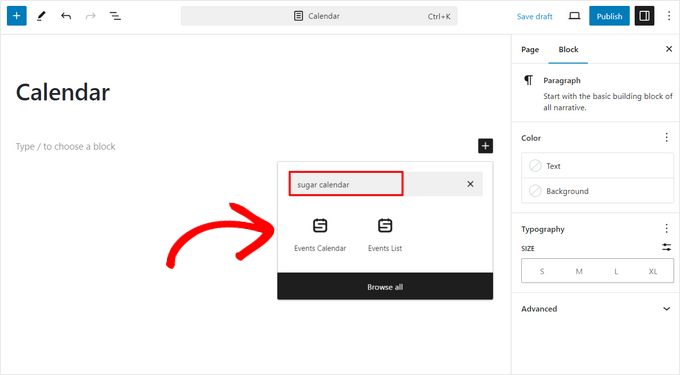
To display upcoming events on a page, you can select the ‘Events List’ block. This will show a list of all the events that are coming up in that month.
Here’s a preview of what upcoming events looked like on the demo site. You can change the view from list to grid or plain, change the week, and use filters to see different events.
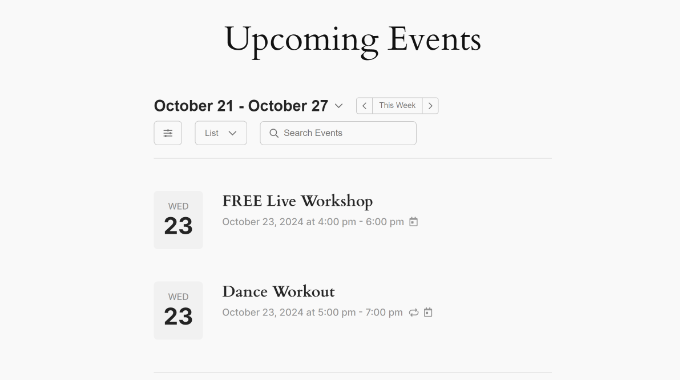
On the other hand, if you’d like to show upcoming events in a calendar view, then you should select the ‘Events Calendar’ block.
You will now see a preview of the calendar in the content editor. Go ahead and publish the page and visit your site to see upcoming events in a calendar view.
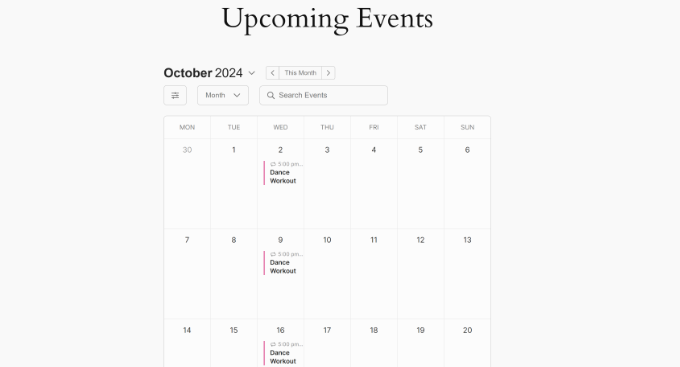
Bonus: Make Money Online With Upcoming Events
Now that you know how to create and show upcoming events in WordPress, you can go to the next level and monetize your site. Let’s go over a few ways you can do that.
1. Run Members-Only Events in WordPress
If you run a membership site or offer subscription-based services, then you can limit access to different events. This way, only members can view and register to attend these events. Members-only events also help strengthen your relationship with your audience. They create a sense of community and belonging among members.
